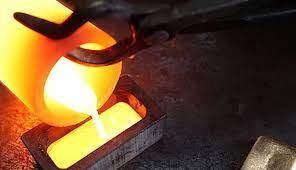News / National
Zimbabwe is hardly undiscovered ground for the world's miners
11 Jun 2024 at 08:59hrs |
0 Views

Zimbabwe has huge amounts of unexplored and underexploited mineral resource potential and the world's resource companies could be lining up to rebuild Zimbabwe's once-mighty gold mines and metal refineries.
Zimbabwe is often painted as a treasure trove for miners, and with solid reason.
The southern Africa country, once a big producer of minerals, is hardly undiscovered ground for the world's miners.
Rio Tinto digs for diamonds there, while the country's platinum reserves, among the largest on the planet, have attracted Anglo Platinum and Impala Platinum, which are the two largest miners of the metal.
The company that later became BHP Billiton was active in the precious metal until the end of the 1990s, while Zimbabwean rock also contains chromite, coal, cobalt, copper, iron ore, nickel, palladium and tin - a rich spectrum of mineral wealth.
By far the main event in Zimbabwean mining is gold, and with prices on world markets close to all-time highs, miners are looking forward to start digging again.
The gold mining industry in the world is struggling to maintain production growth as finding deposits of the yellow metal has become more difficult, according to the World Gold Council (WGC), cited by CNBC on Sunday.
Data from the trade association reportedly shows that mine production rose merely 0.5% in 2023 compared to a year ago.
In 2022, the growth was 1.35% in annual terms, whereas the year before it had risen 2.7%.
"We've seen record first quarter mine production in 2024, up 4% year-on-year," WGC Chief Market Strategist John Reade told CNBC, adding: "But the bigger picture, I think about mine production is that, effectively, it plateaued around 2016, 2018 and we've seen no growth since then."
According to Reade, it is becoming harder to find new gold deposits around the world since many prospective areas have already been explored.
He pointed out that large-scale gold mining is capital-intensive, and requires significant exploration and development. It takes an average of 10 to 20 years before a mine is ready for production, the market strategist said, adding that only about 10% of discoveries contain sufficient deposits to warrant mining.
Gold price hits record high after Raisi death
Moreover, it can take several years to secure government licenses and permits needed for mining companies to start operations.
Many mining projects in remote areas require building infrastructure such as roads, power, and water, Reade noted.
"It's getting harder to find gold, permit it, finance it, and operate it," he said.
Around 187,000 metric tons of gold has been mined throughout history, according to the report, with an additional 57,000 tons still unexcavated.
The price of gold hit record highs last month, rallying to nearly $2,450 per ounce in the wake of rising global geopolitical tensions.
On Monday, the precious metal was trading at $2,330 an ounce.
Zimbabwe is often painted as a treasure trove for miners, and with solid reason.
The southern Africa country, once a big producer of minerals, is hardly undiscovered ground for the world's miners.
Rio Tinto digs for diamonds there, while the country's platinum reserves, among the largest on the planet, have attracted Anglo Platinum and Impala Platinum, which are the two largest miners of the metal.
The company that later became BHP Billiton was active in the precious metal until the end of the 1990s, while Zimbabwean rock also contains chromite, coal, cobalt, copper, iron ore, nickel, palladium and tin - a rich spectrum of mineral wealth.
By far the main event in Zimbabwean mining is gold, and with prices on world markets close to all-time highs, miners are looking forward to start digging again.
The gold mining industry in the world is struggling to maintain production growth as finding deposits of the yellow metal has become more difficult, according to the World Gold Council (WGC), cited by CNBC on Sunday.
Data from the trade association reportedly shows that mine production rose merely 0.5% in 2023 compared to a year ago.
In 2022, the growth was 1.35% in annual terms, whereas the year before it had risen 2.7%.
"We've seen record first quarter mine production in 2024, up 4% year-on-year," WGC Chief Market Strategist John Reade told CNBC, adding: "But the bigger picture, I think about mine production is that, effectively, it plateaued around 2016, 2018 and we've seen no growth since then."
According to Reade, it is becoming harder to find new gold deposits around the world since many prospective areas have already been explored.
He pointed out that large-scale gold mining is capital-intensive, and requires significant exploration and development. It takes an average of 10 to 20 years before a mine is ready for production, the market strategist said, adding that only about 10% of discoveries contain sufficient deposits to warrant mining.
Gold price hits record high after Raisi death
Moreover, it can take several years to secure government licenses and permits needed for mining companies to start operations.
Many mining projects in remote areas require building infrastructure such as roads, power, and water, Reade noted.
"It's getting harder to find gold, permit it, finance it, and operate it," he said.
Around 187,000 metric tons of gold has been mined throughout history, according to the report, with an additional 57,000 tons still unexcavated.
The price of gold hit record highs last month, rallying to nearly $2,450 per ounce in the wake of rising global geopolitical tensions.
On Monday, the precious metal was trading at $2,330 an ounce.
Source - Additional reporting from RT
Join the discussion
Loading comments…

























